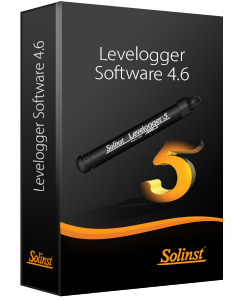What types of applications are Leveloggers suited for?
Leveloggers are suited for the following applications:
- Long-term groundwater monitoring
- River, lake, stream gauging
- Water resource management
- Aquifer tests – pumping, slug, step, recovery
- Remote monitoring with telemetry applications
- Harbor and tidal fluctuation and wave action monitoring
- Industrial tank level monitoring
- Management of water taking/pumping
- Watershed or drainage basin recharge studies
- Wetlands and storm water runoff monitoring
- Long-term water level monitoring in wells
- Dam, reservoir, lock monitoring
- Combined Sewer Overflow (CSO) and storm water management
- Dewatering projects
- Aquifer storage and recovery observation
- Salt water intrusion and soil salination monitoring
- Plume remediation monitoring and studies
- Leachate monitoring at landfills, mine tailings, wastes disposal storage sites
- PFAS monitoring applications
- Tracer tests
- Agricultural and stormwater runoff monitoring
- And more...
Can the Levelogger be used for continuous groundwater monitoring?
- Yes, Leveloggers are self-contained dataloggers designed to continuously record water level and temperature fluctuations over time. Leveloggers are available in a number of different pressure ranges, which can be used for shallow piezometers to deep pumping well monitoring. The Solinst Levelogger software package includes features that allow you to incorporate manual water level field measurements; conduct barometric compensations; or adjust the data relative to another reference point (depth to water, ground surface elevation, etc.).
- Remote monitoring via telemetry is also an option.
Can the Levelogger be used in pumping tests?
- Yes, Leveloggers are excellent to use during all pumping tests. The Levelogger 5 and Levelogger 5 LTC can be programmed with a customized sampling schedule that sets the rates at which water level data is collected for a number of separate intervals. You can customize different sampling rates and durations to record water level readings before, during and after the pumping test (baseline, pumping and recovery). If deployed on a direct read cable, real-time Levelogger readings can be viewed and saved on a laptop computer or smart device during the pumping test.
- See Technical Bulletin: Simplify Your Pumping Test...Use a Water Level Datalogger
Can I place a Levelogger beside an electric down hole pump?
- Yes, due to the Faraday cage design, all of the data recorded internally by the Levelogger will be unaffected from nearby electrical noise. Ideally, however, when deploying a Levelogger in a well with a pump, the Levelogger should be placed beyond any potential interference/turbulence effects from the pump's intake. If a Direct Read Cable is used, a separate insertion pipe, that is grounded, is also recommended to prevent potential electrical interference with communication when collecting or viewing data running in Real-Time mode. In the absence of a grounded insertion pipe, ensure the pump is shutoff before interfacing through the Direct Read Cable.
Are Leveloggers suited for surface water applications?
- Yes, the M5 Levelogger 5, Levelogger 5 Junior and Levelogger 5 LTC instruments utilize a highly sensitive pressure sensor for precise water level accuracy and resolution, ideally suited for surface water applications (lakes, wetland, watershed, river or stream gauging). The Levelogger 5 M5 used in tandem with a Barologger 5 can attain water level accuracies of ±8 mm/ 0.017 ft.
- Also, consider using the Solinst LevelVent 5 or AquaVent 5 vented water level dataloggers for highest accuracy in shallow water applications.
Can Leveloggers be used in saltwater environments?
- Yes, the Levelogger 5, Levelogger 5 Junior, and Levelogger 5 LTC can be used in short-term to long-term monitoring in salt water or brackish environments. The Levelogger 5 and Levelogger 5 LTC have a corrosion-resistant coating. However, in harsher environments, you can protect the Levelogger 5 Junior using a balloon filled with non-corrosive/ non-toxic fluid (tap water). As pressure changes, the fluid encasing the loggers will transmit the pressure differential to the logger's pressure transducer, without exposing it to corrosive conditions. Refer to the Levelogger Series User Guide for further maintenance recommendations.
Can I use the same Levelogger in a shallow stream and then in a deep water well?
- Yes, but as with any pressure sensor, be aware that when selecting a higher range sensor (e.g. M100) it provides less accuracy than a lower range sensor (e.g. M5). Choose a pressure range that best meets the needs of your monitoring program (without submerging beyond the calibrated range).
Can I use Solinst Leveloggers in my PFAS monitoring project?
- Yes, PFAS is not used or knowingly present in the manufacture or production of Solinst Products. The wetted materials for the Levelogger 5 are: corrosion-resistant PTFE coating baked-on using polymerization technology, acetal/Delrin® nose cone, filter and top cap, 316L SS, Hastelloy pressure sensor, and a Viton® o-ring. The Levelogger 5 LTC also includes: An acetal conductivity cell and Platinum clad Niobium core wires.
Can I use Solinst Leveloggers in groundwater with a pH of 4?
- As recommended with all our Products, before starting any environmental monitoring project, it is essential to take some steps to evaluate whether the equipment you choose will work as expected in your specific monitoring location. This means comparing the wetted materials of your Levelogger with the conditions and chemicals you expect to encounter in you monitoring project – including pH.




